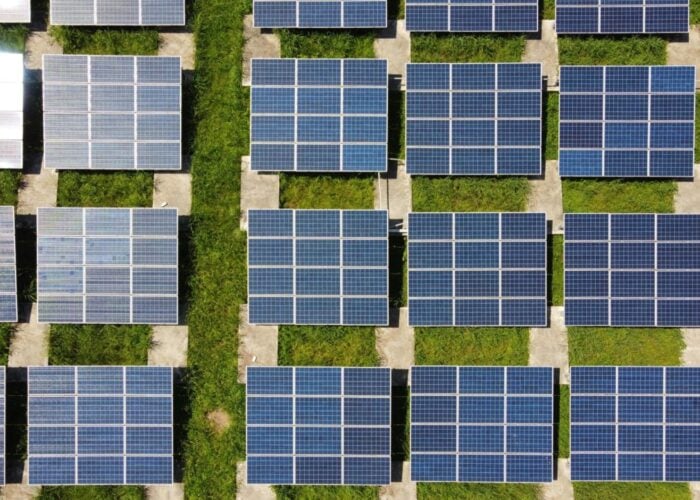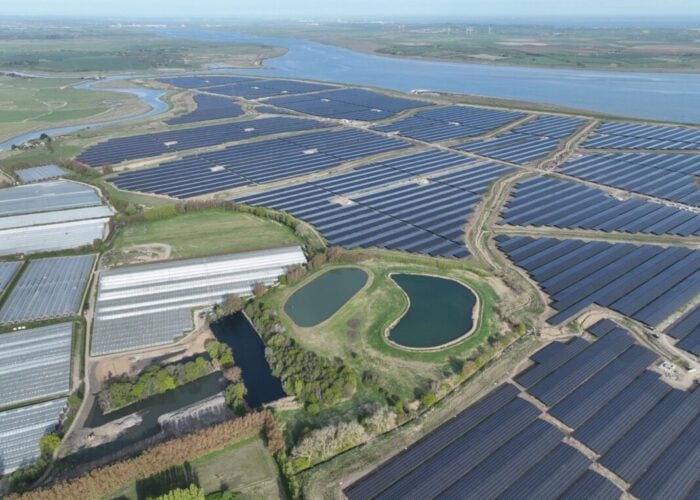Utah’s Public Services Commission has rejected for now proposals for a net metering charge on solar users in the state.
After hearing the proposal from electric company, PacifiCorp’s Utah utility, Rocky Mountain Power (RMP), to charge net metering customers (NMC) an additional US$4.65 monthly fee for using the grid, the commission ruled more evidence is required, with another conference 5 November.
Unlock unlimited access for 12 whole months of distinctive global analysis
Photovoltaics International is now included.
- Regular insight and analysis of the industry’s biggest developments
- In-depth interviews with the industry’s leading figures
- Unlimited digital access to the PV Tech Power journal catalogue
- Unlimited digital access to the Photovoltaics International journal catalogue
- Access to more than 1,000 technical papers
- Discounts on Solar Media’s portfolio of events, in-person and virtual
PacifiCorp filed the proposal last November, claiming that the current rate “fails to allocate to net metering customers the true costs”.
“As residential customers who generate their own power use fewer kilowatt hours from the utility, their support for the costs of maintaining the wires, poles, transformers and substations becomes less,” company spokesman for RMP and PacifiCorp Energy, David Eskelsen, told PV Tech.
New technologies often bring “fundamental changes” to systems “designed decades ago”, said Eskelsen.
Eskelsen said residential rates for net metering are based on a system of assuming similarities and averages in residential energy use, with small grid maintenance fees bundled with the kWh rate.
Because of cost reductions in installing solar and the service fee being tied to kilowatt hour use, the number of NMCs using RMP “is getting big enough that [net metering is] starting to affect how the costs of the wires, poles, transformers and substations are covered by the simple kWh charge”, said Eskelsen.
“Costs to build operate and maintain the grid don’t change with how much electricity you use, or whether you use these facilities for 15 minutes or every hour of the year,” said Eskelsen.
The Commission rejected the charge, with one Commissioner dissenting. Eskelen told PV Tech that dissent within the Commission “has been rare”.
However, evidence submitted by RMP itself appeared to contradict its own case. RMP claimed that NMC average electricity use is on average 518kWh a month, compared to non-NMCs’ average use of 700kWh.
RMP, the Utah Division of Public Utilities and the Office of Consumer Services rebutted that NMCs still contribute less to grid up keep.
But according to Utah Clean Energy (UCE) representative, Sophie Hayes, closer scrutiny of these figures revealed even though RMP’s average rate is 700kWh a month use, the majority of residents, for NMC and non-NMC alike, use 500-600kWh a month.
UCE argued there was no evidence NMC cost PacifiCorp more than non-net metered customers, using the same amount of electricity.
UCE claimed the singling out of NMC is “improper and discriminatory” and that the many benefits of NMC were left out of the proposal.
UCE, the Sierra Club, The Alliance for Solar Choice (TASC), and state caregiver support group, UCARE, 25 witnesses and 1,800 letters opposed the charge.
The Sierra Club also said that PacifiCorp would collect US$116,784 in revenue from a net metering charge, but the benefit provided by net metering is valued at US$1.4 million.
UCARE also concluded PacifiCorp’s analysis was “flawed and incomplete”, and would increase the cost of installing solar by 10%.
Michael Rossetti and Melanie Florence, founding members of Utah Citizens Advocating Renewable Energy, writing in a Salt Lake Tribune op-ed piece, said RMP is “stuck in a coal-centric mentality” and discouraging investment in renewables.
Rossetti and Florence argued that solar customers are giving energy to the grid when it’s needed the most and that out of over 1 million customers EMP wants “to penalise the 2,000-plus who have invested in solar.”
According to a Facebook survey that renewable energy advocacy body, HEAL Utah, conducted in April to May this year, more than 60% of respondents said solar was the one fuel source they would most like RMP to encourage; 86% also said that they disapproved of RMP’s proposed solar fee.
“We hope Rocky Mountain Power will learn from this experience and listen to its customers, who clearly want the utility to fully embrace renewable energy,” said Christopher Thomas, executive director of HEAL Utah.
RMP also runs the US$50 million ‘Utah Solar Incentive Program’, separate from net metering, set to run until 2017.
RMP also runs the ‘Blue Sky program’ the 14 year old financial support programme has helped more than 100 rooftop solar installations in Utah.
On March 26, RMP also announced plans to construct a 5MW solar farm in Utah, supported in large part by funds from the Blue Sky program.
“A token investment in renewable energy,” said Rossetti and Florence.
RMP aims to conitnue exploring the issue to present a new docket, as the evidence will take some time to collect, 5 November will likely schedule a summer hearing to fully review the issue.
Utah’s energy matrix in 2013 was 60% coal, 14% natural gas, 8% wind, 6% hydro. Other sources accounts for 8%, biomass 0.4%, geothermal 0.3%, and solar just 0.02%.
This article was edited 5 September to change the line “rates for net metering are based on a system” from “are based on an outdated system”, and also added: “RMP aims to continue exploring the issue to present a new docket, as the evidence will take some time to collect, 5 November will likely schedule a summer hearing to fully review the issue” and “The Commission rejected the charge, with one Commissioner dissenting. Eskelen told PV Tech that dissent within the Commission is rare” and “RMP, the Utah Division of Public Utilities and the Office of Consumer Services rebutted that NMCs still contribute less to grid up keep”.







